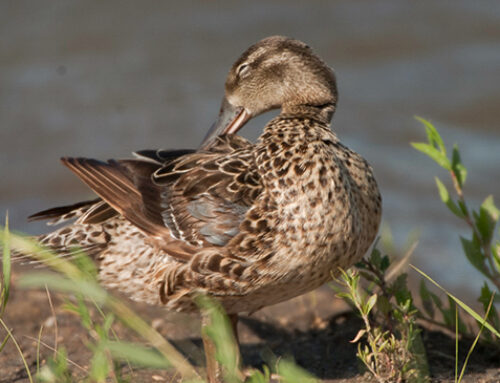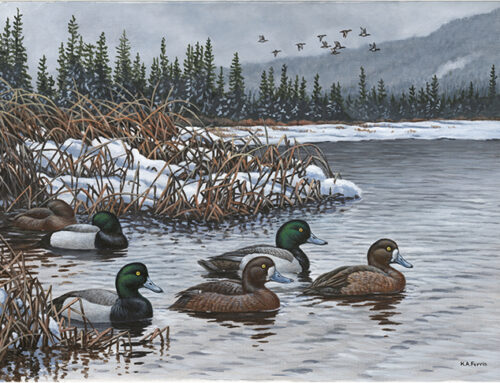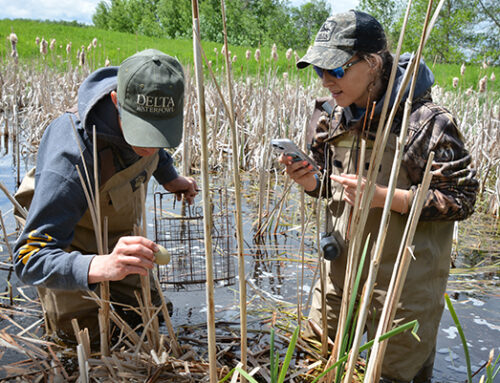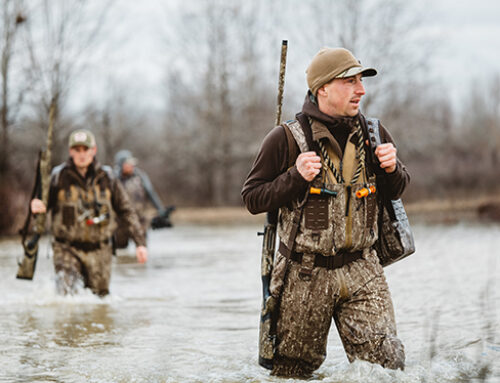Atlantic Flyway Hunting Outlook is Bright

BISMARCK, NORTH DAKOTA — Judging by the recently released 2022 Waterfowl Breeding Population and Habitat Survey, Atlantic Flyway duck and goose hunters can look forward to a decent season ahead.
Results for the Eastern Survey Area showed 1.2 million mallards, up 15% from 2019 (the survey was cancelled in 2020 and 2021 because of COVID-19 concerns). The increase in the eastern mallard population should mean the limit will revert to four mallards daily, but not until the 2023-2024 season. Regulations are already set for the 2022-2023 season, but hunters will certainly welcome more mallards in this year’s fall flight.
Black ducks increased 9% to 796,000, while green-winged teal numbers climbed 7% and goldeneyes were up 23%. Mergansers rose 13%, while ring-necked ducks decreased 11%. Wood ducks were estimated at 1 million in the east. Overall, the breeding duck population is strong in the Eastern Survey Area. In addition, habitat conditions this spring were good to excellent across the east, which should result in strong duck production.
There’s more good news on the goose front: The Atlantic Population of Canada geese, or AP geese, was estimated at 164,000. That’s up significantly from the 2019 estimate of 120,000 and 112,000 in 2018. The Atlantic Flyway resident goose population is essentially unchanged at a healthy 1.02 million.
Scaup, a.k.a. bluebills, were unchanged from 2019 numbers at 3.6 million. Redheads were up 35%, while canvasbacks declined by 10%. The prairie breeding grounds were wet, so good production is expected. Puddle ducks that migrate to the Atlantic Flyway from the prairies such as blue-winged teal and gadwalls should be more abundant.
Based on USFWS models, hunters can expect a 60-day season in 2023-2024, with a six-duck daily limit, the same as the upcoming season. — Paul Wait
Mike Buxton, senior waterfowl programs manager for Delta Waterfowl, said the major storms and colder-than-normal spring temperatures delayed the nesting season in the Dakotas and Manitoba. However, the rain and snow provided excellent duck habitat.
“Ice-out and nesting was delayed, but nesting conditions were good this spring because of the wet weather,” Buxton said.
Buxton, who runs Delta’s Predator Management program, pointed out that predator populations seemed to be down this spring, likely as a result of the significant drought conditions in 2021 and a harsh 2021-2022 winter.
“Duck production should be good this year, and appears to be phenomenal in parts of North Dakota this year,” Buxton said. “Water, including those temporary and seasonal ponds, stayed on the landscape late into the nesting season this year. That provides opportunities for hens that might have lost a first nest to predators to renest and hatch a brood.”
While habitat conditions were good to excellent on the eastern prairies, southwestern Saskatchewan and southern Alberta were dry this spring. The western United States — California in particular — remains mired in drought. Duck production in those areas is expected to be poor.
Overall, duck production is expected to be strong in 2022, which means more ducks over the decoys when waterfowl seasons get underway.
“It’s going to be another very good year to hunt waterfowl,” said Dr. Scott Petrie, chief executive officer of Delta Waterfowl. “All of us at The Duck Hunters Organization encourage you to have a safe and enjoyable hunting season.”
For more information, contact Dr. Chris Nicolai at cnicolai@deltawaterfowl.org, or Joel Brice, (888) 987-3695, jbrice@deltawaterfowl.org.
Delta Waterfowl Foundation is The Duck Hunters Organization, a leading conservation group working to produce ducks and ensure the tradition of duck hunting in North America. Visit deltawaterfowl.org.







[…] to biologists, a large portion of the Atlantic Flyway duck population winters in Florida. Because Florida is one of the best duck hunting states, many of the state’s best […]